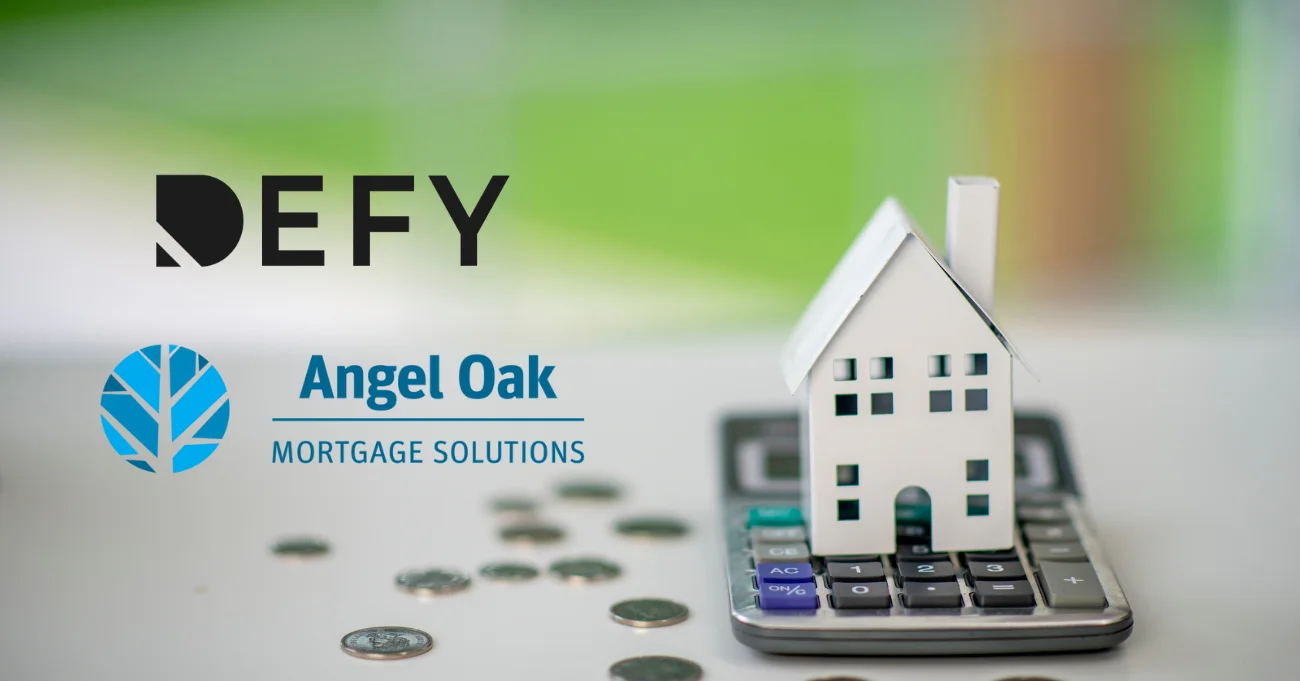Do 3-month bank statement loans still exist? In this article, we have all of the answers.
If you’re self-employed, a freelancer, or have income that fluctuates, a traditional loan with pay stubs might feel impossible to qualify for. That’s where 3-month bank statement loans come in. These loans allow you to qualify for a mortgage by providing just 3 months of bank statements instead of tax returns. This is ideal for those whose income on paper might not reflect their actual earning potential. However, it’s important to be aware that these loans often come with higher interest rates than conventional options – not always, but it’s important to note.
What Is a Bank Statement Loan?
According to a study conducted by Upwork, a popular freelancing platform, over 64 million Americans did some sort of freelance work in 2023. The proportion of Americans who are self-employed keeps increasing, too, with a whopping 10.1% of the population identifying as self-employed.
These borrowers are being left behind by the traditional (and often restrictive) mortgage lending process.

A bank statement loan is a type of mortgage designed for borrowers whose income verification might be tricky using traditional methods. Instead of relying on tax returns, pay stubs or W2s, this loan uses recent bank statements, typically 12 to 24 months’ worth, to demonstrate cash flow and income from either personal or business bank statement documentation. In addition, bank statement loans can be used to purchase several types of properties including primary, secondary, and investment properties.
Bank statement loans are often considered non-QM (non-qualified) loans and are often provided by alternative mortgage lenders.
Who Should Consider Getting a Bank Statement Loan?
Bank statement loans are primarily for people with variable income: self-employed individuals, freelancers, business owners, and real estate investors. Bank statement loans zero in on what actually matters: whether or not the borrower has enough money to pay for the property.
How Does a Bank Statement Loan Work?
Applying for a 3-month bank statement loan works just like applying for any other loan: you prepare information that you’d typically need to identify yourself (ID, social security number, etc), and apply online. The lender will let you know what they need from there – usual credit scores, cash flow history, etc.
Bank statement lenders generally do not look at a borrower’s tax returns or tax statements. At Defy, for example, we don’t require a borrower to show tax returns during the loan qualification process.
Then, for a traditional bank statement loan, the lender will analyze your bank deposits over a 12-24 month period to determine your average monthly income and assess your ability to repay the loan.
A 3-month bank statement loan, however, has a much shorter time period over which the lender looks at your average income. Instead of 12-24 months, they’ll only look at three.
Do 3-Month Bank Statement Loans Exist?
3-month bank statement loans do still exist, but they’re only offered by a select few lenders and typically have much higher interest rates and origination fees than their more traditional 12-24 month counterpart. Lenders have to factor in the additional risk, so they have the borrower foot the bill.
Defy offers bank statement loans with flexible requirements for a variety of borrowers. While we do require 12-24 months of bank statements, we’re well-positioned to help freelancers and self-employed people achieve their dreams of homeownership.
3-Month Bank Statement Loans vs. Standard Bank Statement Loans
As we mentioned above, the biggest difference between 3-month bank statement loans and standard bank statement loans are the additional fees for 3-month bank statement loans. With only 3 months of bank statements, lenders have a less complete picture of your income stability. This shorter timeframe might not capture seasonal variations, unexpected income fluctuations, or the full picture of your business expenses (for self-employed borrowers).
Therefore, 3-month bank statements require more manual analysis by the lender to understand your income sources and spending patterns. Lenders work this into the total cost of the loan.
Defy, on the other hand, keeps it as simple as possible so we can offer our borrowers best-in-class rates and fees.

3-Month Bank Statement Loans vs. Standard Bank Statement Loans
As we mentioned above, the biggest difference between 3-month bank statement loans and standard bank statement loans are the additional fees for 3-month bank statement loans. With only 3 months of bank statements, lenders have a less complete picture of your income stability. This shorter timeframe might not capture seasonal variations, unexpected income fluctuations, or the full picture of your business expenses (for self-employed borrowers).
Therefore, 3-month bank statements require more manual analysis by the lender to understand your income sources and spending patterns. Lenders work this into the total cost of the loan.
Defy, on the other hand, keeps it as simple as possible so we can offer our borrowers best-in-class rates and fees.
3-Month Bank Statement Loans vs. Stated Income Loans
Though both 3-month bank statement loans and stated income loans aim to help borrowers with untraditional income qualify for mortgages, they differ in a couple of key ways.
Stated income loans, which were largely phased out after the 2008 financial crisis, relied solely on the borrower’s reported income without verification. On the lender’s forms, there was a section for “Income” and the borrower reported whatever number they wanted. With a stated income loan, there is virtually no verification. This posed a high risk for lenders.
In contrast, a 3-month bank statement loan is one step of verification up from a stated income mortgage. 3-month bank statement loans analyze actual bank deposits over a limited timeframe, offering a more reliable snapshot of income than stated income mortgages – but still pretty limited.
Defy Mortgage does not offer either of these lending options.
Pros and Cons of 3-Month Bank Statement Loans
Pros
- Allows nontraditional borrowers a way of qualifying for a mortgage without getting phased out from the mortgage industry entirely.
- Processing can be faster. Since borrowers only have to gather 3 months worth of bank statements (and lenders only have 3 months worth of bank statements to analyze), it can be faster than gathering 12+ months of bank statements or 2+ years of pay stubs.
- In some cases, borrowers can qualify for higher loan limits since they’re only focused on the last 3 months of income. If your income is seasonal and those last 3 months featured a spike, the lender might approve a higher loan based off that data.
Cons
- Since lenders are using such a short time frame to verify income, they’ll typically offer rates and fees that are much higher than traditional bank statement loans.
- If your income is seasonal and you qualify for a higher loan limit than you otherwise would, you run a higher risk of defaulting on the loan and having the lender seize your property.

3-Month Bank Statement Loan Alternatives
Defy offers a 12-24 month bank statement loan that comes at much lower rates than competitors’ 3-month bank statement loan. We also offer other non-QM loan options such as P&L loans for business owners, DSCR loans for real estate investors, asset depletion loans for high-net-worth individuals, and more.
3-Month Bank Statement Loan FAQs
- What is a bank statement loan?
A bank statement loan is a type of mortgage designed for borrowers whose income verification might be tricky using traditional methods. Instead of relying on tax returns, pay stubs or W2s, this loan uses recent bank statements, typically 12 to 24 months’ worth, to demonstrate cash flow and income from either personal or business bank statement documentation. In addition, bank statement loans can be used to purchase several types of properties including primary, secondary, and investment properties.
Bank statement loans are often considered non-QM (non-qualified) loans and are often provided by alternative mortgage lenders.
- Who should get a bank statement loan?
Self-employed people, freelancers, and business owners all benefit from bank statement loans and should consider them as an alternative while shopping around for a mortgage.
- Do 3-month bank statement loans even exist?
They do! Unfortunately, however, lenders usually offer 3-month bank statement loans at prohibitively high interest rates. 12-24 month bank statement loans, on the other hand, are much more accessible.
- Should I get a 3-month bank statement loan or a standard bank statement loan?
A standard (12-24 month) bank statement loan offers lower rates than a 3-month bank statement loan, but there are pros and cons to consider.
- Is a 3-month bank statement loan the same as a stated income loan?
A stated income loan is NOT the same thing as a 3-month bank statement loan. A stated income loan allows borrowers to qualify for a mortgage by, well, stating their income. A 3-month bank statement loan, on the other hand, requires real documentation and verification.
- What are other loan options besides 3-month bank statement loans?
Defy offers a traditional bank statement loan for self-employed borrowers, and that is a good loan option. Other options include P&L loans, DSCR, and more.
- What are the pros and cons of getting a 3-month bank statement loan?
Pros: can potentially qualify for a higher loan limit. Only need 3 months of bank statements. Cons: higher interest rates, higher origination fees.
- Does Defy Mortgage offer 3-month bank statement loans?
Defy doesn’t offer 3-month bank statement loans, but we do offer 12-24 month bank statement loans. If you’d like a quote, contact us today. We are here to help!




